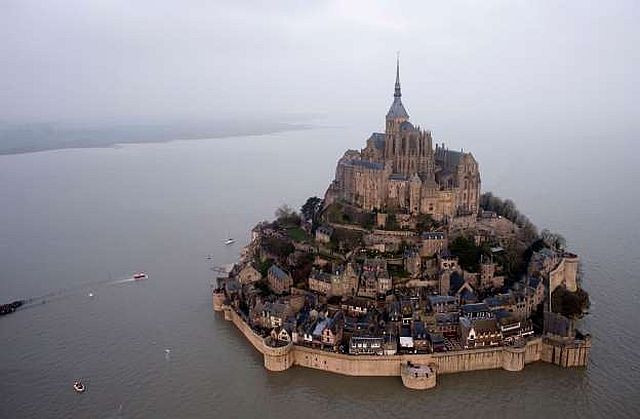
High tide submerges a narrow causeway leading to the Mont Saint-Michel on France’s northern coast in this March 21, 2015 photo. (AP PHOTO)
Luang Prabang — A number of UNESCO’s World Heritage Sites face major challenges, including the following:
MACHU PICCHU, PERU
This magnificent “lost city of the Incas” is cited by UNESCO as beset by logging, poor waste management and agricultural incursion but hasn’t been placed on its list of sites in danger. Peruvian experts are raising other alarm bells, from vehicle fumes to the unceasing tread of footsteps producing a similar effect as a small-scale earthquake that could lead to collapse of the temples and other structures.
OMORI, JAPAN
This sleepy western Japanese town had “no outstanding universal value,” according to the International Council on Monuments and Sites, which makes recommendations on world heritage sites. Its only attraction was a long defunct silver mine and no tourist infrastructure existed aside from one eight-room guesthouse. But following intense lobbying by Japanese authorities, Omori was inscribed in 2007. A year later, almost 1 million tourists poured in, rupturing the quiet lifestyle of the unprepared community.
LIJIANG, CHINA
Amid widespread publicity, the 800-year-old town in China’s southern province of Yunnan was declared a site in 1997, and is today one of the country’s top domestic tourist destinations. Outsiders with more capital and skills moved in, sparking tensions with mostly ethnic minority residents who felt they were “losing their town.”
Annual visitors swelled from some 150,000 before the heritage designation to 2.8 million three years later and some 16 million last year.
MONT SAINT-MICHEL, FRANCE
This offshore islet topped by a stunning 8th century Benedictine abbey was France’s first heritage site and among the first ever designated. Already a major pilgrimage destination in the Middle Ages, it underwent many transformations but has always drawn romantics and the faithful, even when it served as a prison during the French Revolution.